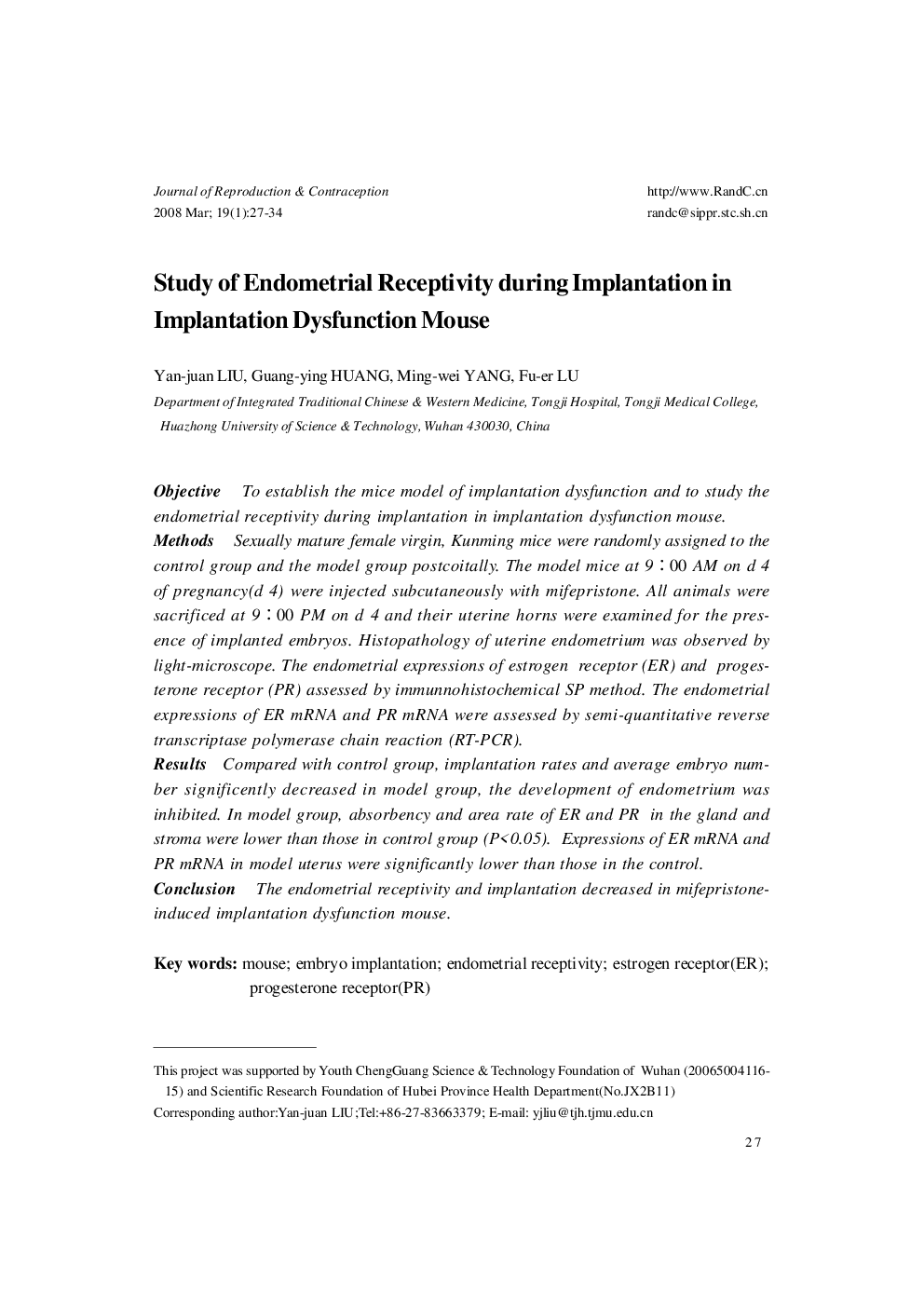| Article ID | Journal | Published Year | Pages | File Type |
|---|---|---|---|---|
| 3964152 | Journal of Reproduction and Contraception | 2008 | 8 Pages |
ObjectiveTo establish the mice model of implantation dysfunction and to study the endometrial receptivity during implantation in implantation dysfunction mouse.MethodsSexually mature female virgin, Kunming mice were randomly assigned to the control group and the model group postcoitally. The model mice at 9 : 00 AM on d 4 of pregnancy(d 4) were injected subcutaneously with mifepristone. All animals were sacrificed at 9 : 00 PM on d 4 and their uterine horns were examined for the presence of implanted embryos. Histopathology of uterine endometrium was observed by light-microscope. The endometrial expressions of estrogen receptor (ER) and progesterone receptor (PR) assessed by immunnohistochemical SP method. The endometrial expressions of ER mRNA and PR mRNA were assessed by semi-quantitative reverse transcriptase polymerase chain reaction (RT-PCR).ResultsCompared with control group, implantation rates and average embryo number significently decreased in model group, the development of endometrium was inhibited. In model group, absorbency and area rate of ER and PR in the gland and stroma were lower than those in control group (P<0.05). Expressions of ER mRNA and PR mRNA in model uterus were significantly lower than those in the control.ConclusionThe endometrial receptivity and implantation decreased in mifepristone- induced implantation dysfunction mouse.
